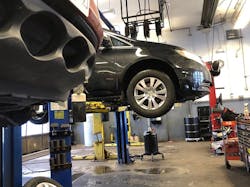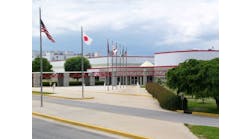From economic issues to new and used car availability, there are plenty of outside forces impacting the tire industry. Analyst John Healy discusses these topics and why he thinks tier-one tiremakers are in a good spot for 2022.
Healy tracks the domestic tire industry for Northcoast Research Holdings LLC and also writes MTD’s monthly Your Marketplace column. This is the final installment of his industry outlook for the year.
MTD: In your December MTD column, you wrote that more consumers are gravitating toward tier-one tires. Some dealers we have talked with disagree. What makes you say consumer preference is shifting back to tier-one?
Healy: Over the last few years, we believe that tier-two and tier-three tires have largely gained share in the replacement tire market. Why have these products gained share? We would say this has been a function of their quality and value price point, as well as growth in distribution caused by changes at tier-one manufacturers.
More recently, we have not seen as much share gained by tier-two and tier-three manufacturers. This is probably a function of progress made in years past and at some point, the runway getting shortened for these operators.
Additionally, as we think about 2021 — a year in which product was scarcer and prices elevated — we think this has caused tier-one manufacturers who are often producing in-region to benefit from better fill rates.
Will this dynamic continue in 2022? That’s hard to tell, but we think having products and getting them into the sales channel may be the most important elements to success in the year ahead.
MTD: Much has been written about tire manufacturers’ emphasis on sustainability. Do you think this is moving the needle for them, in terms of sales? Does sustainability translate into sales for tire dealers at the store level?
Healy: While sustainability goals are important from an image standpoint, it likely does not translate down to dealer sales and consumer selection of a certain brand in a meaningful way.
Ultimately, consumers are going to select the tire that best fits their personal preference of price and performance, although upselling from a dealer may be able to change these preferences.
We do not see dealers upselling certain brands due to their sustainability efforts, but rather for purely business reasons of generating better revenue/profits.
MTD: The new and used car markets are experiencing super-heated pricing and inventory issues. What impact — if any — has this had on retail tire demand?
Healy: While prices have been going up across the board, vehicle prices have seen some of the biggest gains, which has caused some consumers to delay a vehicle purchase.
From a reference standpoint, a proxy we monitor for used car market values is provided by auction house Manheim.
The Manheim Index, which measures the average price of vehicles in the wholesale market, is up roughly 30% compared to a year-ago.
This step-up in car values and the cost to acquire vehicles has caused consumers to invest more in their current vehicles as they wait for vehicle prices to cool. Given this, replacement tire demand has been strong while vehicle prices remain at record levels.
Although tire prices have gone up dramatically over the last year, the absolute price change between investing in a new set of tires compared to a new/used vehicle has widened. We believe that demand will slow once price pressures begin to ease.
MTD: Now that the economy has entered an inflationary phase, what impact will this have on tire demand in 2022 — both long-term and short-term?
Healy: Given the increase in vehicle prices, consumers are holding onto their cars longer as they delay the purchase of replacement vehicles. That said, tires have seen aggregate price increases of 25% to 35% since October of last year, which has had little effect on demand as these prices are passed along to consumers.
While overall demand has remained relatively steady, there was some tradedown from consumers in terms of what tire tier they were buying early in this pricing surge. This trade-down began to subside as inflation became more widespread.
In terms of how 2022 will shape up, solid demand levels are likely to persist on the replacement side for the first half of the year and may begin to moderate as new vehicle output increases.
John Healy is breaking down the biggest issues in the tire industry. Don't miss any of his analysis:
3 Top Issues Tire Dealers Should Track in 2022
What's Ahead for Tire Pricing and Tariffs





